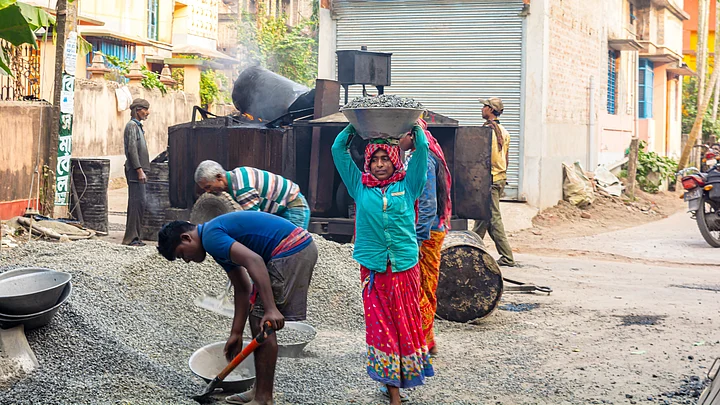In an attempt to control air pollution, the Delhi government has drafted certain guidelines to be followed by government and private construction agencies.
Delhi's Environment Minister Gopal Rai chaired a meeting with various stakeholders on Monday, 25 September, to discuss preventive measures that can be taken in order to curb air pollution in the national capital.
Residents of Delhi are likely to lose 11.9 years of their life if the current air pollution levels persist, according to the Air Quality Life Index (AQLI) report by Chicago University's Energy and Policy Institute. The report released in August this year also declared the National Capital Territory of Delhi as the most polluted city in the world.
What was the outcome of the meeting? How many guidelines are there and whom do they apply to? Will the Kejriwal-led government's plan help Delhi breathe easier? Keep reading.
What happened in the meeting chaired by Delhi's environment minister?
Delhi's Environment Minister Gopal Rai called a meeting on Monday, with over 200 government officials and representatives of private construction agencies.
In the meeting, Rai urged them to follow the set of 14 guidelines that had been issued in order to reduce dust pollution in the city. "pollution is an issue related to our lives and our children's lives. Everyone has to fight together to save our breath. Therefore, everyone will have to fulfill their responsibilities with full honesty," he said.
"Strict action will be taken against government and private agencies not following the norms," he added.
He further said that it is mandatory for all Government and Private Construction agencies to provide on-site training to construction workers regarding the guidelines.
Suggestions were also taken from the representatives of the construction agencies.
What are government and private construction agencies required to install?
According to the Delhi administration's guidelines, it is mandatory for both government and private construction agencies to install the following :
Dust or wind-breaking walls of appropriate height around the periphery of the construction site.
Anti-Smog Guns for construction areas that are more than 5,000 square metres.
Tarpaulin or green net on scaffolding around the area under construction and the building.
Paved roads leading to or at construction sites.
If the area is more than 20,000 square metres, the roads must be blacktopped (metallic roads).
What else are government and private construction agencies required to ensure?
All vehicles, including those carrying construction material and construction debris of any kind, should be cleaned and their wheels washed.
All vehicles carrying construction material and construction debris should be fully covered and protected.
All construction debris and construction material of any kind should be stored on the site and not dumped on public roads or pavements.
Unpaved surfaces and areas with loose soil should be adequately sprinkled with water to suppress dust.
Construction and demolition waste should be recycled on-site or transported to the authorised recycling facility. Due record of the same should be maintained.
Every worker working on the construction site and involved in loading, unloading, and transportation of construction material and debris should be provided with an anti-dust mask to prevent inhalation of dust particles.
Arrangements should be made for medical help and treatment of workers who are involved in the construction of a building or carrying of construction material and debris.
Dust mitigation measures shall be displayed prominently at the construction site for easy public viewing.
What should construction agencies not do?
The Delhi government further cautioned that no loose soil, sand, construction or demolition waste, or construction material should be left uncovered.
"No grinding and cutting of building materials in open areas. Wet jets should be used in grinding and stone cutting," it added.
What is the Delhi government doing ahead of winter?
The Aam Aadmi Party (AAP) government in Delhi is bracing for winter and the poor air quality that comes with it by drafting 15 focus points.
However, it is not clear yet as to what exactly these 15 steps entail.
(At The Quint, we question everything. Play an active role in shaping our journalism by becoming a member today.)
